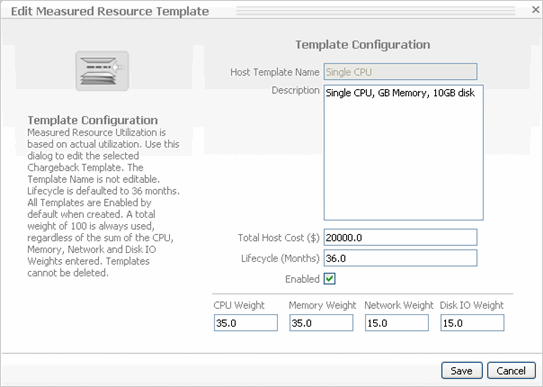Pros and Cons of Using the Tiered Flat Rate Model
Measured Resource Utilization Model
Understanding MRU Chargeback Calculations
Foglight™ Chargeback runs MRU hourly background calculations. When the calculation runs, it inventories where all of the VMs are on each server and assumes, (for calculation simplicity, ignoring VMotion events) that each VM has been resident on that server host for the entire hour.
An organization can simultaneously and indefinitely run reports using the Tiered Flat Rate + Add Ons (see Add Ons Model) or MRU + Add Ons models to compare the chargeback costs calculated using each model. Since the organization ultimately needs end user department buy in, the chargeback model(s) are straight-forward and fair. At some point an organization may decide to use TFR + Add Ons or MRU + Add Ons.
Example of Measured Resource Utilization Cost Calculation
The following prerequisites are used:

